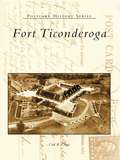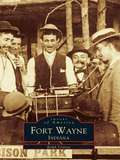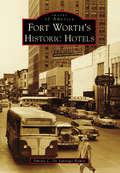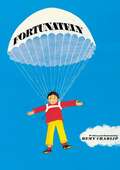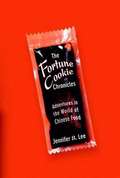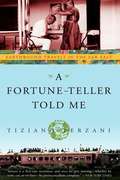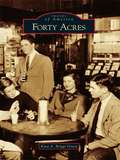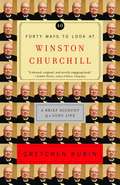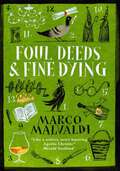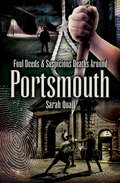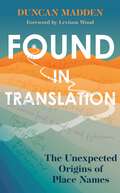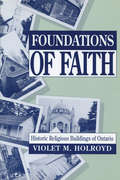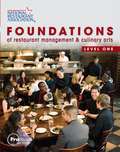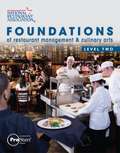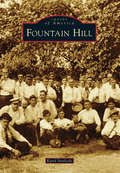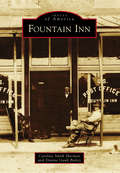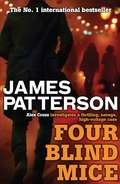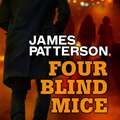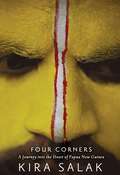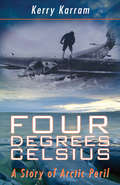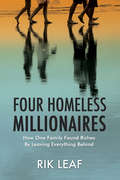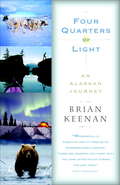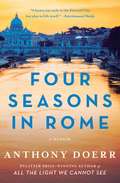- Table View
- List View
Fort Ticonderoga (Postcard History Series)
by Carl R. CregoCalled "the Key to the Continent" and "the Gibraltar of the North," Fort Ticonderoga controlled the strategically critical portage between Lakes George and Champlain in the eighteenth century and played an important role in both the French and Indian War and the American Revolution. French troops began construction of the fort in 1755, calling it Fort Carillon. The British captured the fort in 1759 and renamed it Fort Ticonderoga. The storming of the fort on May 10, 1775, by Benedict Arnold, Ethan Allen, and the Green Mountain Boys was America's first victory of the Revolutionary War.
Fort Wayne, Indiana
by Ralph VioletteIn 1895, Fort Wayne officially celebrated the centennial of the construction of a Fort at the Three Rivers by General Anthony Wayne in 1794. For the belated birthday, Fort Wayne's streets were festooned with flags and bunting. Centennial archeswere erected throughout the city, and many events filled the week-long celebration. This photographic essay examines the century since the centennial. It outlines Fort Wayne's development in the twentieth century and conveys a picture of the city at the end of the century. The significance of the rivers in Fort Wayne's development is explored. A chapter on Calhoun Street focuses on the changes the twentieth century has produced in the downtown area. Changes in residential patterns, transportation, and leisure-time activities are emphasized.
Fort Worth's Historic Hotels (Images of America)
by Simone C. De Santiago RamosFort Worth, originally named Camp Worth, was founded as an Army outpost in 1849, and the old cavalry stables became Fort Worth's first hotel. The Texas & Pacific Railroad arrived in Fort Worth in July 1876, bringing the need for more lodging. Shortly after its arrival, boardinghouses and simple accommodations were quickly opened. At the turn of the century, Fort Worth became a center for cattle ranchers, and the first luxury hotels were built. By the next decade, wealthy oil barons replaced the cattle ranchers, and the demand for larger and more elaborate hotels was established. Many of these first hotels were replaced with motor lodges and smaller chain hotels after the growth of the automobile industry; however, a few are still in operation today.
Fortunately
by Remy CharlipGood and bad luck accompany Ned from New York to Florida on his way to a surprise party. Images and image descriptions available.
The Fortune Cookie Chronicles: Adventures in the World of Chinese Food
by Jennifer 8 LeeOne woman. One obsession. Forty thousand restaurants. A woman's search for the world's greatest Chinese restaurant proves that egg rolls are as American as apple pie.
A Fortune-Teller Told Me: Earthbound Travels in the Far East
by Tiziano TerzaniNow in paperback, this work by Terzani, a jet-age Asian correspondent, recounts his year of traveling the Far East by foot, boat, bus, car, and train--but never by airplane--while rediscovering the land, the people, and himself.
Forty Acres (Images of America)
by Kara A. GreenForty Acres was developed into a neighborhood in the 19th century from a 40-acre parcel of farmland. Just as many other neighborhoods have ethnic associations, many Irish Wilmingtonians have their roots in Forty Acres. Some Forty Acres families stayed for generations, and the neighborhood was popular well into the 20th century. What makes Forty Acres different is its sense of community and the close-knit relationships developed between its residents. While it is admired for its historic charm, the neighborhood is an urban community made up of a mixed-use residential and commercial village within the city of Wilmington. Today Forty Acres continues to be a place where the word "neighbor" holds strength, value, and friendship.
Forty Ways to Look at Winston Churchill
by Gretchen RubinWarrior and writer, genius and crank, rider in the British cavalry's last great charge and inventor of the tank--Winston Churchill led Britain to fight alone against Nazi Germany in the fateful year of 1940 and set the standard for leading a democracy at war. Like no other portrait of its famous subject, Forty Ways to Look at Winston Churchill is a dazzling display of facts more improbable than fiction, and an investigation of the contradictions and complexities that haunt biography. Gretchen Craft Rubin gives readers, in a single volume, the kind of rounded view usually gained only by reading dozens of conventional biographies. With penetrating insight and vivid anecdotes, Rubin makes Churchill accessible and meaningful to twenty-first-century readers with forty contrasting views of the man: he was an alcoholic, he was not; he was an anachronism, he was a visionary; he was a racist, he was a humanitarian; he was the most quotable man in the history of the English language, he was a bore.In crisp, energetic language, Rubin creates a new form for presenting a great figure of history--and brings to full realization the depiction of a man too fabulous for any novelist to construct, too complicated for even the longest narrative to describe, and too valuable ever to be forgotten. From the Hardcover edition.
Foul Deeds and Fine Dying: A Pellegrino Artusi Mystery
by Marco MalvaldiPellegrino Artusi, the great gastronome and amateur detective, is back. It is 1900 and Pellegrino's famed cookbook is in its fifth edition. Flushed from his fortune and success, our hero joins a weekend party at the Tuscan castle of the wealthy agricultural entrepreneur, Secondo Gazzolo. In this castle of winding corridors, secret passageways and clandestine meetings, Pellegrino finds a curious collection of guests, each with their own purpose for being there.But when one of the party is found dead in his locked bedroom, seemingly the victim of suffocation, it is up to Pellegrino and his old friend, the detective Ispettore Artistico, to solve what really happened, for the science of food is every bit as complex, rigorous and tantalising as the sublime art of investigation.A perfect "locked room mystery" that will have your brain and your tastebuds tickled.Translated from the Italian by Howard Curtis
Foul Deeds and Fine Dying: A Pellegrino Artusi Mystery
by Marco MalvaldiPellegrino Artusi, the great gastronome and amateur detective, is back. It is 1900 and Pellegrino's famed cookbook is in its fifth edition. Flushed from his fortune and success, our hero joins a weekend party at the Tuscan castle of the wealthy agricultural entrepreneur, Secondo Gazzolo. In this castle of winding corridors, secret passageways and clandestine meetings, Pellegrino finds a curious collection of guests, each with their own purpose for being there.But when one of the party is found dead in his locked bedroom, seemingly the victim of suffocation, it is up to Pellegrino and his old friend, the detective Ispettore Artistico, to solve what really happened, for the science of food is every bit as complex, rigorous and tantalising as the sublime art of investigation.A perfect "locked room mystery" that will have your brain and your tastebuds tickled.Translated from the Italian by Howard Curtis
Foul Deeds & Suspicious Deaths Around Portsmouth (Foul Deeds & Suspicious Deaths)
by Sarah QuailMore than five hundred years of British true crime stories—from mutinies and murders to duels and executions. This collection of historical true crime tales includes more than twenty notorious episodes that range from medieval times to the modern era, and offers a fascinating insight into criminal acts and the criminal mind. Set in the vicinity of Portsmouth, England, these intriguing and shocking cases cover an extraordinary variety of misdeeds, some motivated by brutal impulse or despair, others by malice. Most involve ill-fated individuals who are only known to us because they were caught up in crime, but more famous episodes appear as well, such as the murder of the Duke of Buckingham and the disappearance of the Cold War frogman Buster Crabb. Includes illustrations
Found in Translation: The Unexpected Origins of Place Names
by Duncan MaddenFound in Translation: The Unexpected Origins of Place Names unravels the tangled threads of history and etymology to uncover the strange, intriguing and enlightening stories that have shaped the names of countries and places around the world.Starting in the world's second largest country, Canada, whose name means 'the village', renowned travel writer, Duncan Madden takes us on a spellbinding tour through the Americas, Europe, Africa, Asia and Oceania, visiting the weird and wonderful along the way. Learn about the Land Protected by Fire , otherwise known as Azerbaijan; drop by Hippopotamus, or Mali; and sail to the Land of Frizzy-Haired Men in Papua New Guinea.Found in Translation will entertain and inspire the culturally curious - armchair explorers and avid travellers, historians, linguists and lovers of language - painting a new perspective on the names, histories and origins of the places we live in and travel to. Visiting more than sixty countries across all six continents, Found in Translation includes the stories of Canada, USA, Mexico, Costa Rica, Cuba, Brazil, Argentina, Iceland, Ireland, UK, Germany, Russia, Italy, Senegal, South Africa, Tanzania, Iraq, India, China, Thailand, Korea, Japan, Australia, New Zealand and many more...The foreword, written by bestselling author, explorer and photographer, Levison Wood, sets the context for this revelatory work that is part travelogue, history book and etymological reference.
Found in Translation: The Unexpected Origins of Place Names
by Duncan MaddenFound in Translation: The Unexpected Origins of Place Names unravels the tangled threads of history and etymology to uncover the strange, intriguing and enlightening stories that have shaped the names of countries and places around the world.Starting in the world's second largest country, Canada, whose name means 'the village', renowned travel writer, Duncan Madden takes us on a spellbinding tour through the Americas, Europe, Africa, Asia and Oceania, visiting the weird and wonderful along the way. Learn about the Land Protected by Fire , otherwise known as Azerbaijan; drop by Hippopotamus, or Mali; and sail to the Land of Frizzy-Haired Men in Papua New Guinea.Found in Translation will entertain and inspire the culturally curious - armchair explorers and avid travellers, historians, linguists and lovers of language - painting a new perspective on the names, histories and origins of the places we live in and travel to. Visiting more than sixty countries across all six continents, Found in Translation includes the stories of Canada, USA, Mexico, Costa Rica, Cuba, Brazil, Argentina, Iceland, Ireland, UK, Germany, Russia, Italy, Senegal, South Africa, Tanzania, Iraq, India, China, Thailand, Korea, Japan, Australia, New Zealand and many more...The foreword, written by bestselling author, explorer and photographer, Levison Wood, sets the context for this revelatory work that is part travelogue, history book and etymological reference.
Foundations of Faith: Historic Religious Buildings of Ontario
by Violet M. HolroydThe Ontario landscape is dotted with places of worship, from the simple log cabin to lofty cathedrals. Behind each lie personal stories of exceptional individuals and historical events, all of which have helped shape our lives.The lovers of Anne of Green Gables may be pleasantly surprised by Lucy Maud Montgomery’s long association with the Leaksdale Manse just north of Toronto. From the James Bay lowlands comes an unusual example of ingenuity involving a historic Moose Factory landmark, while the poignant love story involving Florence Nightingale and a local minister is depicted in the attractive stained glass window of a church in Elora. A more recent page of history is captured through the side-by-side relationship of a synagogue and mosque. Throughout, Foundations of Faith will delight the armchair traveller and invite the mobile history buff to explore Ontario.
Foundations of Restaurant Management and Culinary Arts: Level One
by Prentice HallIndustry-driven curriculum that launches students into their restaurant and foodservice career! Curriculum of the ProStart® program offered by the National Restaurant Association. The National Restaurant Association and Pearson have partnered to bring educators the most comprehensive curriculum developed by industry and academic experts.
Foundations of Restaurant Management and Culinary Arts: Level Two
by Prentice HallIndustry-driven curriculum that launches students into their restaurant and foodservice career! Curriculum of the ProStart® program offered by the National Restaurant Association. The National Restaurant Association and Pearson have partnered to bring educators the most comprehensive curriculum developed by industry and academic experts.
Fountain Hill
by Karol StreleckiIncorporated in 1893, Fountain Hill has developed a reputation as a quiet residential enclave located in a lush, wooded valley whose springs and creeks drain into the Lehigh River at Bethlehem. Its history is closely tied to the Fountain Hill Historic District of South Bethlehem. At the same time, the borough has developed a spirit and presence of its own. Home to St. Luke's University Hospital--the first hospital in the Lehigh Valley and now a leading medical treatment facility in eastern Pennsylvania--the borough also boasts a variety of historic homes and developments. While Fountain Hill has remained primarily residential since its inception, its history has been an assemblage of creative enterprises and curious personalities that have left an imprint on the town. For a time, it hosted a thriving silk and garment industry, but this was short-lived, and the hulks of these buildings remain as reminders of a dream unfulfilled.
Fountain Inn (Images of America)
by Caroline Smith Sherman Dianne Gault BaileyBefore there was an inn and a fountain, the present town of Fountain Inn was half Indian Territory bisected by the “Old Indian Boundary Line.” It was established in 1766 by a treaty made between Old Hop, the head of the Cherokees, and Gov. James Glen of the province of South Carolina. The Cherokees used this area—a region of dense forests, canebrakes, and springs of water—for hunting deer, turkeys, panthers, bears, wolves, wildcats, and even buffalo. Only a few settlers had moved to the territory prior to the Revolutionary War. The Fairview Presbyterian Church community was not settled until 1786. Around 1830, a stagecoach stop was established where there was not only an inn but also a spring of water that gushed two feet in the air like a fountain. In time, the stop became known as Fountain Inn. After the War Between the States, Noah Cannon, a resident of the Greer area, bought up huge tracts of land, and so began the village that was chartered in 1886.
Four Blind Mice (Alex Cross #8)
by James PattersonAlex Cross is preparing to resign from the Washington Police Force. He's enjoying the feeling; not least because the Mastermind is now in prison. And Alex has met a woman, Jamilla Hughes, and he is talking about the future. Then John Sampson shows up at the house, desperate for Alex's help. Three young military wives have been brutally killed during a 'girls' night out' and Sampson's friend, a master sergeant at the army base, stands accused.Uncovering evidence of a series of suspicious murder convictions, Alex and Sampson are determined to infiltrate the closed world of the military. But what is the army trying to hide? And do the mysterious symbols daubed on the house of the accused mean that there are more sinister forces at work?
Four Blind Mice (Alex Cross #8)
by James PattersonAlex Cross is preparing to resign from the Washington Police Force. He's enjoying the feeling; not least because the Mastermind is now in prison. And Alex has met a woman, Jamilla Hughes, and he is talking about the future. Then John Sampson shows up at the house, desperate for Alex's help. Three young military wives have been brutally killed during a 'girls' night out' and Sampson's friend, a master sergeant at the army base, stands accused.Uncovering evidence of a series of suspicious murder convictions, Alex and Sampson are determined to infiltrate the closed world of the military. But what is the army trying to hide? And do the mysterious symbols daubed on the house of the accused mean that there are more sinister forces at work?(P)2012 Headline Digital
Four Corners: A Journey into the Heart of Papua New Guinea
by Kira SalakFollowing the route taken by British explorer Ivan Champion in 1927, and amid breathtaking landscapes and wildlife, Salak traveled across this remote Pacific island-often called the last frontier of adventure travel-by dugout canoe and on foot. Along the way, she stayed in a village where cannibals m was still practiced behind the backs of the missionaries, met the leader of the OPM-the separatist guerrilla movement opposing the Indonesian occupation of Western New Guinea-and undertook an epic trek through the jungle. The New York Times said "Kira Salak is tough, a real-life Lara Croft. " And Edward Marriott, proclaimed Four Corners to be "A travel book that transcends the genre. It is, like all the best travel narratives, a resonant interior journey, and offers wisdom for our times. "
Four Degrees Celsius: A Story of Arctic Peril
by Kerry KarramA dramatic story of the rescue of eight men on a prospecting mission in the Arctic that covers a period of four suspenseful months in the fall of 1929. This true story began in August 1929. A group of eight prospectors, led by C.D.H. MacAlpine of the Dominion Explorers, flew into the Arctic in search of mineral wealth. Grossly underequipped, the expedition ran out of fuel and was stranded above the Arctic Circle. Within days, Western Canada Airways sent a rescue team headed by Captain Andy Cruickshank, in what was to become the most extensive aviation search in Canadian history.The searchers encountered trouble: turbulent weather, forced landings, and plane crashes. The prospectors were also struggling, as they waited edgily for freeze-up and the anticipated crossing to Cambridge Bay. While Cruickshank and his team were trying to reconstruct a damaged aircraft, MacAlpine and his men were forced to run more than 112 kilometres on barely frozen ice to arrive at Cambridge Bay, where they still awaited rescue.
Four Homeless Millionaires
by Rik LeafIn the throes of a global recession, Rik and Zara Leaf sold their house and spent a year traveling around the world with their son Zion, and daughter Riel, investing their life savings in a laugh out loud adventure of a lifetime. The family filmed horror movies in Canada, ate mafia-made pizza in Germany, got caught sneaking onto a Hollywood set in Hawaii, survived a feral dog attack in Malaysia and dorsal fins emerging from the surf as they swam off the Australian coast. The thought of abandoning conventional wisdom and getting away with it was too exciting to pass up. Of course, the decision to really 'go for it' involved lots of anxious 'what ifs' and 'are we out of our frigging minds?' Throughout the year they produced a videos series called, "Where in the World are Zion & Riel?" QR codes linked to these videos are included in the book, creating an amazing interactive reading experience.
Four Quarters Of Light
by Brian KeenanBrian Keenan's fascination with Alaska began as a small boy choosing his first library book in a Belfast school. The book was Jack London's wondrousCall of the Wild. And it has permeated Keenan's life ever since. A short visit to Fairbanks several years ago was enough to seal his connection with the place and he resolved to return. Last year he did so with a head full of questions about its inspiring landscape and heart informed with his own love of the desolate and barren places of the world. In the course of a journey that takes him through four geographical quarters from snowmelt in May to snowfall in September, he discovers a land as fantastical as a fairytale but whose vastness has a very peculiar type of allure . . . From the Trade Paperback edition.
Four Seasons in Rome: On Twins, Insomnia, and the Biggest Funeral in the History of the World
by Anthony DoerrFrom the author of the acclaimed Pulitzer Prize-winning #1 New York Times bestseller All the Light We Cannot See, a "dazzling" (Azar Nafisi, author of Reading Lolita in Tehran) memoir about art and adventures in Rome.Anthony Doerr has received many awards--from the New York Public Library, the National Endowment for the Arts, and the American Library Association. Then came the Rome Prize, one of the most prestigious awards from the American Academy of Arts and Letters, and with it a stipend and a writing studio in Rome for a year. Doerr learned of the award the day he and his wife returned from the hospital with newborn twins. Exquisitely observed, Four Seasons in Rome describes Doerr's varied adventures in one of the most enchanting cities in the world. He reads Pliny, Dante, and Keats -- the chroniclers of Rome who came before him--and visits the piazzas, temples, and ancient cisterns they describe. He attends the vigil of a dying Pope John Paul II and takes his twins to the Pantheon in December to wait for snow to fall through the oculus. He and his family are embraced by the butchers, grocers, and bakers of the neighborhood, whose clamor of stories and idiosyncratic child-rearing advice is as compelling as the city itself. This intimate and revelatory book is a celebration of Rome, a wondrous look at new parenthood, and a fascinating story of a writer's craft--the process by which he transforms what he sees and experiences into sentences.
